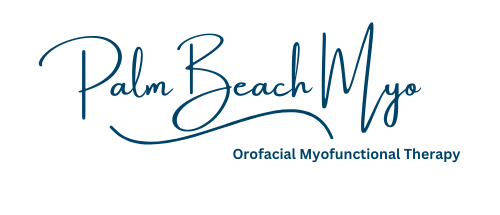The Missing Piece in Orthodontics: Correcting Parafunctional Habits
How Myofunctional Therapy Enhances Orthodontic Outcomes and Prevents Relapse
Orthodontic treatment is designed to straighten teeth and create a beautiful, functional smile. However, many patients and orthodontists face a frustrating challenge: relapse—teeth shifting back even after braces or aligners are removed.
One of the biggest contributors to longer treatment times, instability, and relapse isn’t just genetics or poor retainer compliance—it’s muscle function. The forces of the tongue, lips, and cheeks can work against orthodontic treatment, making it harder to move teeth efficiently and keep them in place long-term.
Orofacial Myofunctional Therapy (OMT) is the missing link in orthodontics, helping to correct the underlying habits that can delay treatment and cause relapse. If you or your patients are experiencing tight retainers, shifting teeth, or difficulty maintaining results, myofunctional therapy may be the key to lasting orthodontic success.
Why Do Teeth Shift Even After Braces or Aligners?
Orthodontics focuses on aligning teeth and jaws, but muscle forces dictate stability. The position of the teeth is influenced by constant pressure from the lips, cheeks, and tongue. If these muscles are dysfunctional, they create undesirable forces that fight against orthodontic treatment, making it harder to move teeth into place and keep them there.
Common Myofunctional Issues That Impact Orthodontic Treatment
✔ Low Tongue Posture – The tongue should rest on the roof of the mouth, but if it rests low, it fails to provide proper support for the upper arch.
✔ Tongue Thrust – Pushing the tongue forward against the teeth when swallowing can cause open bites, flared incisors, and relapse.
✔ Mouth Breathing – Leads to poor oral posture, narrow dental arches, and instability in orthodontic results.
✔ Lip and Cheek Pressure – Tight lips or overactive cheeks can push teeth inward, creating misalignment or difficulty in arch expansion.
Without addressing these parafunctional habits, orthodontic treatment often takes longer than expected and has a higher likelihood of relapse—even with retainer use.
How Myofunctional Therapy Improves Orthodontic Outcomes
Myofunctional therapy works by retraining the tongue, lips, and facial muscles to support the alignment of teeth and jaws. When done before, during, or after orthodontic treatment, it can:
✅ Reduce Treatment Time – Eliminating negative muscle forces allows teeth to move more efficiently.
✅ Enhance Orthodontic Stability – Proper muscle function ensures teeth stay in their ideal positions.
✅ Prevent Retainer Tightness & Discomfort – If you wear your retainer nightly and it always feels tight, underlying muscle habits may be shifting your teeth.
✅ Minimize the Risk of Relapse – By correcting oral posture, myofunctional therapy helps lock in orthodontic results for life.
Signs That Myofunctional Therapy May Be Needed
🔹 Tight Retainers Every Night – If your retainers always feel tight despite regular wear, muscle forces may be acting on your teeth.
🔹 Teeth Shifting After Treatment – Even with retainers, shifting teeth can indicate unresolved oral muscle dysfunction.
🔹 Prolonged Orthodontic Treatment – If treatment is taking longer than expected, tongue and lip forces may be working against tooth movement.
🔹 Open Bite or Flared Front Teeth – Tongue thrusting is a major cause of persistent bite issues and relapse.
🔹 Chronic Mouth Breathing – Affects facial development, tongue posture, and the ability to maintain a stable bite.
The Ideal Time to Start Myofunctional Therapy
✔ Before Orthodontics – Helps prepare the muscles and oral posture, making treatment more efficient.
✔ During Orthodontic Treatment – Supports tooth movement and prevents tongue or lip forces from slowing progress.
✔ After Orthodontics – Prevents relapse by ensuring the muscles support the new tooth positions.
By integrating myofunctional therapy into orthodontic care, patients achieve faster, more stable results that last a lifetime.
Take the Next Step: Protect Your Smile for Life
If you’re struggling with tight retainers, shifting teeth, or prolonged orthodontic treatment, it may not be your retainer’s fault—your tongue, lips, and breathing habits could be working against your results.
Orofacial Myofunctional Therapy can help.
📞 Contact Palm Beach Myo today for a consultation!
🌐 Visit: www.PalmBeachMyo.com
📧 Email: PalmBeachMyo@gmail.com
📍 Call: (561) 303-6004
Don’t let parafunctional habits undo your orthodontic investment—take control of your smile today!
